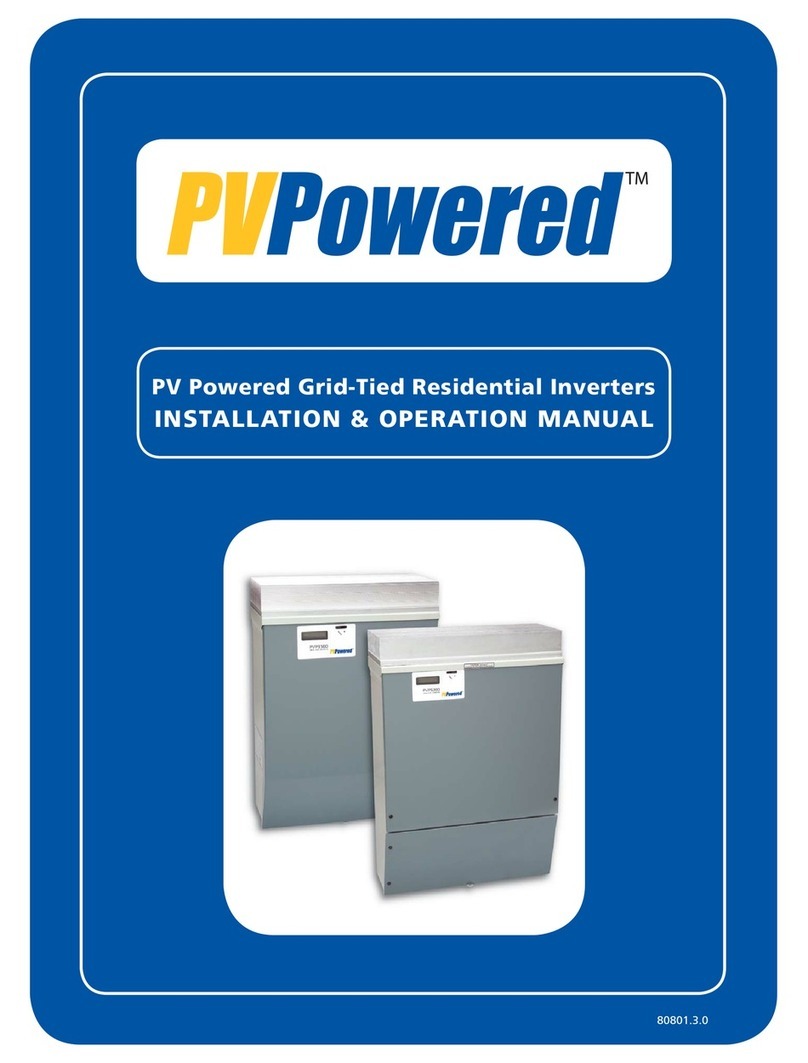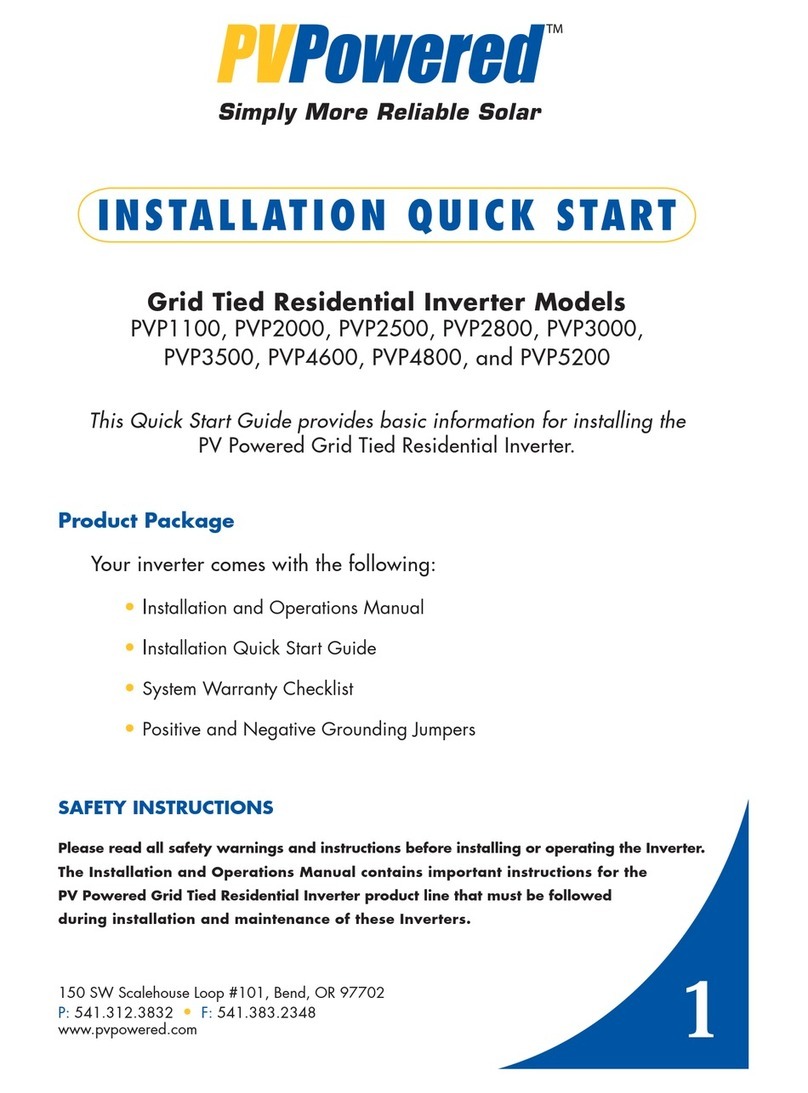
v
List of Figures and Tables
Figure 2-1 View of the Inverter’s Interior Components .....................................................4
Figure 3-1 Small Mounting Bracket ...................................................................................5
Figure 3-2 Large Mounting Bracket ...................................................................................6
Figure 3-3 Inside Screw - Below the Power Board ............................................................6
Figure 3-4 Inverter and PV System Disconnectwith Mounting Bracket in Place ..............7
Table 3-1 Required Branch Circuit Protection...................................................................8
Table 3-2 Inverter Voltage Frequency Limits ....................................................................8
Figure 3-5 Communications, AC and DC Ports ..................................................................9
Table 3-3 Grounding Electrode Sizing ............................................................................10
Figure 3-6 System Block Diagram Showing Single-Point Ground..................................11
Figure 3-7 Ground Fault Message ....................................................................................12
Figure 3-8 AC and PV Grounding ....................................................................................12
Figure 3-9 AC Wiring for the Line 1, Line 2 and Ground Conductors.............................13
Table 3-4 PV Open Circuit Voltages................................................................................14
Figure 3-10 Positive and Negative GFI Jumpers..............................................................15
Figure 3-11 Power Board Connections.............................................................................16
Figure 4-1 Normal Startup Screens ..................................................................................19
Figure 4-2 Running Screens .............................................................................................19
Figure 5-1 Faulted.............................................................................................................21
Figure 5-2 Starting Up From a Faulted State....................................................................21
Figure 5-3 AC Voltage High/DC Voltage Low Fault........................................................22
Figure 5-4 Power Low Fault.............................................................................................22
Table 5-1 Fault Codes .......................................................................................................23
Table A-1 PVP1100 through PVP2800 Specifications .....................................................24
Table A-1 (continued) PVP3000 through PVP5200 Specifications...................................25
Table A-2 Abnormal Specifications ..................................................................................26
Figure B-1 Side and Front Views of PVP1100W, PVP2000W, PVP2500W,
PVP2800W, PVP3000W, and PVP3500W Inverter Cabinet................................27
Figure B-2 Back and Bottom Views of PVP1100W, PVP2000W, PVP2500W,
PVP2800W, PVP3000W, and PVP3500W Inverter Cabinet................................28
Figure B-3 Side and Front Views of the PVP4600W, PVP4800W,
and PVP5200W Inverter Cabinet .........................................................................29
Figure B-4 Back and Bottom Views of the PVP4600W, PVP4800W,
and PVP5200W Inverter Cabinet .........................................................................30

































